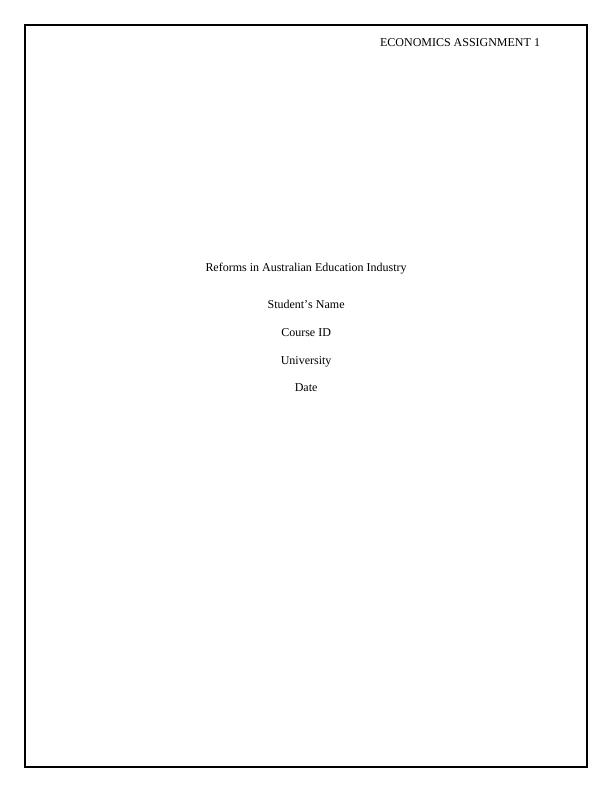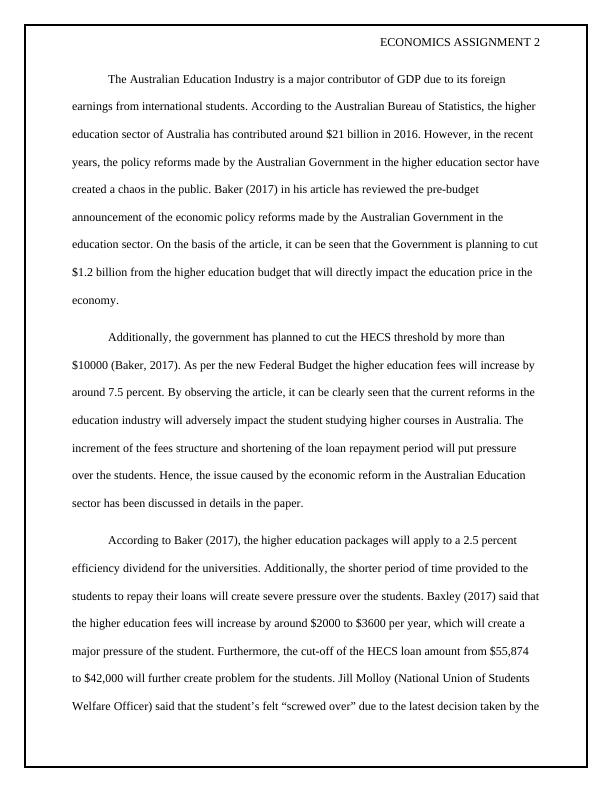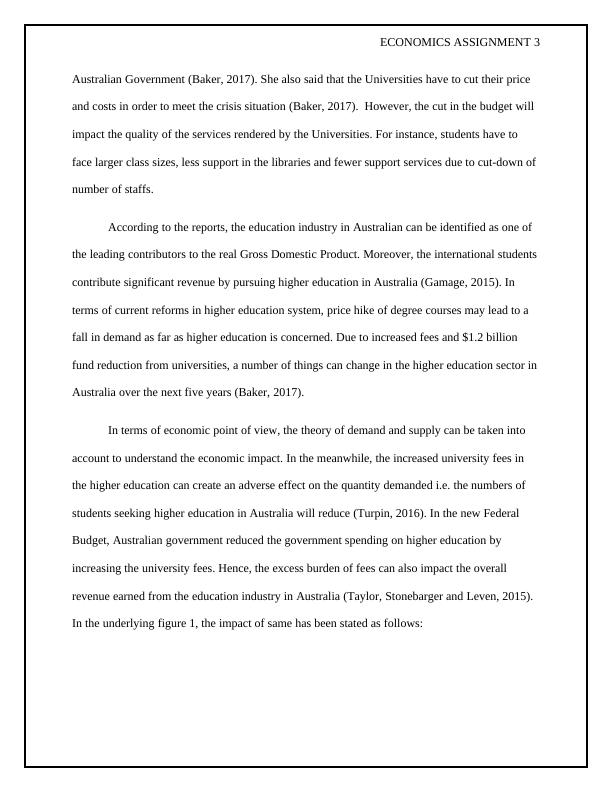EMV501 - Reforms in Australian Education Industry | Assignment
Charles Sturt University
Education System In Australia (EMV501)
Added on 2020-02-24
About This Document
EMV501 - Reforms in Australian Education Industry | Assignment, The Australian Education Industry is a major contributor to GDP due to its foreign earnings from international students. According to the Australian Bureau of statistics, the higher education sector of Australia has contributed around. However, in recent years, the policy reforms made by the Australian Government in the higher education sector have created chaos in the public. Baker in his article has reviewed the pre-budget announcement of the economic policy reforms made by the Australian Government in the education sector.
EMV501 - Reforms in Australian Education Industry | Assignment
Charles Sturt University
Education System In Australia (EMV501)
Added on 2020-02-24
End of preview
Want to access all the pages? Upload your documents or become a member.



